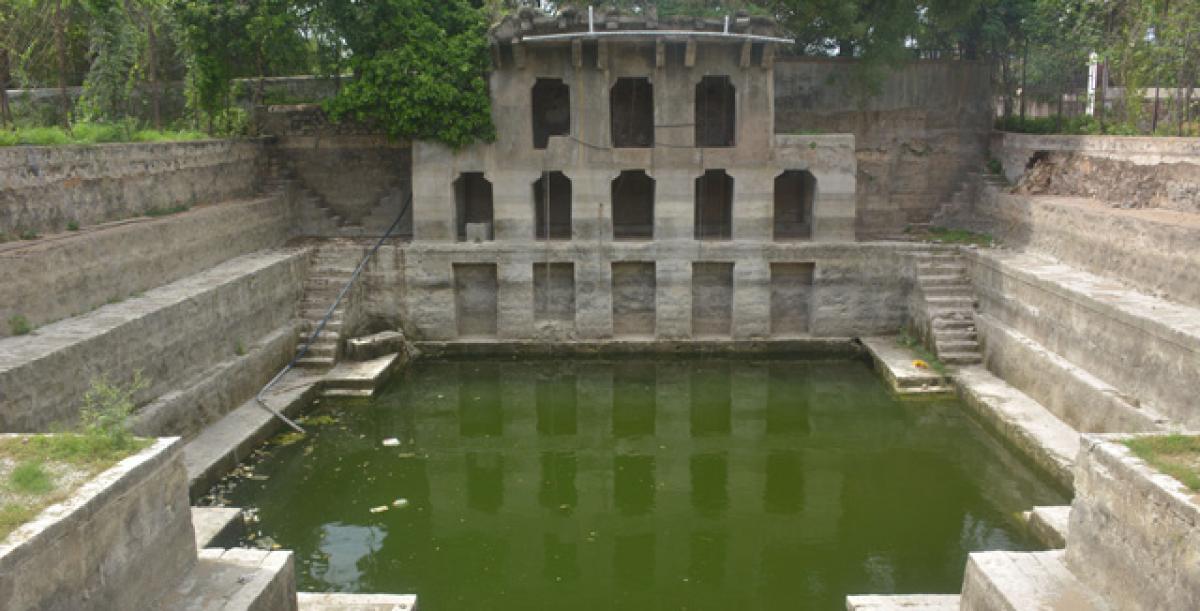Live
- Their ‘passion’ for vines, flowers reaps benefits!
- Happy Tidings...Interim relief balm for state public sector employees
- All set to obtain GI tag for Balanagar Custard Apple
- Centre announces Rs 142 crore for Ramappa, Somashila tourist circuits
- Poorest of the poor will get roof over head under Indiramma: CM Revanth
- Govt keen on providing pothole-free roads: HM
- CM to disburse pension in Nemakallu today
- Jagan’s mindless decisions caused huge loss to RTC: Zonal chief Sannapureddy
- MLA Nani slams former MLA Chevireddy for false allegations
- Veligonda Project works begin, giving solace to farmers
Just In

Hyderabad is dotted with Baolis (stepwells), some of them built more than 300 years ago. Forgotten and in obscurity for a major part, these stone-carved marvels are slowly being restored and are brimming with life.
Hyderabad is dotted with Baolis (stepwells), some of them built more than 300 years ago. Forgotten and in obscurity for a major part, these stone-carved marvels are slowly being restored and are brimming with life.
Stepwells in Telangana were built by zamindars, samasthans, kings and landlords in forts, temple complexes, mosques and places where travellers would stop by. These stepwells are simpler compared to the ones in Rajasthan that have intricate design.
In the past, stepwells were a primary water source for locals in the area. They provided respite from heat, a gathering point for locals as well as people passing by and served as places of prayer.
The stepwell at English and Foreign Languages University (EFLU) built in geometric design during the Asif Jahi period is more than 200 years old. The three-storied structure has five flights of steps, two on each story and one that leads to the water. This well is in shape of a square with four arches on each floor.
This stepwell was falling apart but thanks to the authorities it was restored and even social events were held. Today, it is filled with water and is used for the gardens in the campus.
Another major stepwell that was on the verge of vanishing and was brought back to life is the Badi Bowli at Qutub Shahi Tombs. As part of the 10-year conservation plan undertaken by the Aga Khan Trust for Culture, the weakened stepwell was restored recently. In 2013, stone work came apart and it caved in due to heavy rains. It also led to the collapse of the wall on the western side.
The restoration was painstaking as 20 lakh litres of water had to be pumped out and fed to other wells and craftsmen had to work carefully as the structure was weak and there were chances of it collapsing. Old photographs were used in the restoration project.
The stepwells at the Sitarambagh temple are historic and have a district character. Not in the same class of stepwells seen in Rajasthan, but these structures have intricate designs. It is said that during the Razakars movement in the 1940s, scores of people took refuge inside the temple and the stepwell came handy.
In the far end of the city at Hayatnagar is a huge stepwell largely neglected and now almost reduced to a dump yard. It was once a major source of water to the people living in the area and for travellers.
There are hundreds of rooms built for travellers, which still stand at the Hayat Bakshi Begum mosque. It is difficult to go to the stepwell as a huge wall separates it and the mosque. Locals say that in the early 90s, people would go for a swim during summer. Today, trees and bushes have grown making it difficult to see the bottom of the well.
Tucked away in the by lanes of Moula Ali is a stepwell inside the Mah Laqa Chanda Bai’s tomb, which was restored with a grant from the American Embassy in 2011. One can see a Persian water wheel that was used to raise irrigate the garden.
There are many stone-carved trenches with winding staircases and colonnades in the city, majorly hidden and uncared for, could if restored to their old glory, solve the water crisis.
By T P Venu

© 2024 Hyderabad Media House Limited/The Hans India. All rights reserved. Powered by hocalwire.com







